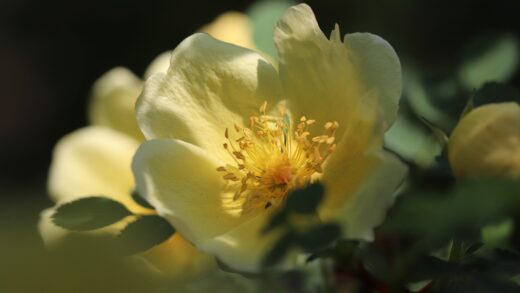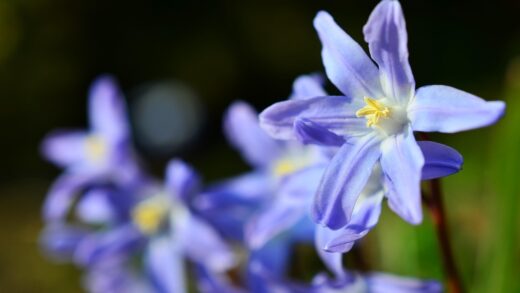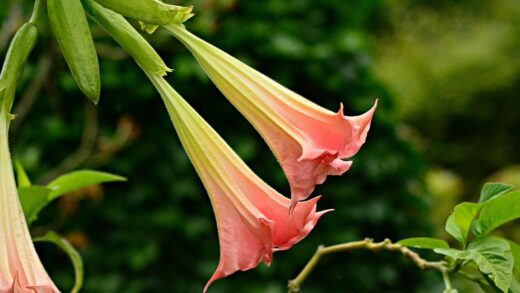To understand the light requirements of the sloe, one need only look to its preferred natural habitats: the bright, open edges of woodlands, sun-drenched hedgerows, and wide-open scrubland. The sloe is, at its core, a sun-loving plant. It thrives on direct, unfiltered sunlight, which fuels the vital process of photosynthesis, providing the energy required for every aspect of its growth, from the profusion of its stunning spring blossoms to the development of its iconic, tart autumn fruits. Providing ample sunlight is the single most important factor in ensuring a sloe shrub is not only healthy and vigorous but also productive. While it can tolerate less than ideal light conditions, its performance will be a direct reflection of the amount of sun it receives.
The ideal location for a sloe is a position that receives full sun, which is generally defined as six or more hours of direct sunlight per day during the growing season. In such a spot, the plant will develop a dense, sturdy structure, its leaves will be a healthy dark green, and it will be best equipped to defend itself against pests and diseases. Most importantly for many growers, abundant sunlight is the primary trigger for prolific flowering. Since the fruits develop from these flowers, a sun-drenched sloe will invariably produce a much heavier and more reliable crop of berries than one grown in the shade.
While full sun is the ideal, the sloe is an adaptable plant and will grow in conditions of partial shade. This might be a location that receives direct sun for only a few hours in the morning or evening, or one that is under the dappled light of taller, overhanging trees. In these conditions, the sloe will certainly survive, but its growth habit and productivity will be noticeably different. It is likely to be more open and ‘leggy’ in its structure as it stretches its branches out in search of more light. The display of flowers will be sparser, and the subsequent fruit crop will be significantly diminished or even non-existent.
Therefore, when planning to plant a sloe, a careful assessment of the available light is a critical first step. Observing how the sun moves across your garden throughout the day and throughout the seasons will help you identify the optimal spot. Choosing a location that maximizes sun exposure will reward you with a sloe that performs to its full potential, showcasing the very best of its ornamental and productive qualities. For this rugged pioneer, light is the most fundamental currency for success.
The importance of full sun
Full sun is the gold standard for cultivating a healthy and productive sloe shrub. When a sloe receives six or more hours of direct sunlight each day, it is able to photosynthesize at its maximum capacity. This process converts light energy into chemical energy in the form of sugars, which are the fuel for all of the plant’s activities. Abundant energy reserves lead to strong, robust growth, creating a dense, thorny structure that is characteristic of the species and excellent for providing wildlife habitat. This vigor also enhances the plant’s natural resilience against potential health issues.
More articles on this topic
The most dramatic impact of full sun is on flowering and fruiting. The sloe forms its flower buds on the wood that grew in the previous year. The amount of sunlight this wood receives directly influences the quantity and quality of the buds that are formed. A shrub that has been bathed in sun all summer will have a much higher potential for a spectacular floral display the following spring. Since each flower has the potential to become a sloe berry, a greater number of flowers leads directly to a greater potential harvest. Without sufficient sun, the plant will simply not have the energy to produce a significant number of flower buds.
Furthermore, sunlight also plays a crucial role in the ripening of the fruit. The sun’s energy helps the plant to produce the sugars and complex compounds that give the sloes their unique, intense flavour. Fruits that develop in full sun will ripen more evenly and are often larger and of better quality than those that develop in shady conditions. A gardener looking to harvest sloes for making sloe gin, jellies, or other preserves will find that a sun-grown crop provides the best results.
In a garden design context, placing the sloe in full sun allows its ornamental qualities to shine. The stark, black branches in winter, the brilliant cloud of white blossom in early spring, and the deep purple-black fruits against the green foliage in autumn are all displayed to their best advantage in bright light. The dense structure that develops in a sunny spot also makes it a much more effective screen or barrier hedge compared to the thinner, more open form it would adopt in the shade.
Tolerating partial shade
While the sloe has a strong preference for full sun, it is a tolerant and adaptable species that can still grow in partial shade. It is important to have realistic expectations, however, as its performance in such conditions will be compromised. A location with partial shade might receive only three to four hours of direct sun, typically in the morning or late afternoon, or it might be in an area of dappled light for most of the day, such as beneath a high-canopied deciduous tree. The plant will survive in these conditions, but it will exhibit noticeable changes in its growth and behaviour.
More articles on this topic
The most obvious change will be in the plant’s physical form. In lower light, the sloe will tend to become more ‘drawn’ or etiolated, producing longer, thinner branches with greater spacing between the leaves. This is a classic plant response to shade, as it is actively ‘reaching’ for more light. The overall structure will be much less dense and bushy than a specimen grown in full sun. This can make it less effective as a screening hedge and can result in a somewhat sparse and gangly appearance.
The most significant impact of partial shade is the reduction in flowering and fruiting. A sloe grown in a shady spot will produce far fewer flowers than one in the sun, and in deep shade, it may not flower at all. The plant conserves its limited energy resources for essential survival functions like leaf and stem growth, rather than expending it on the energy-intensive process of reproduction. For a gardener whose primary goal is to harvest sloes, a shady location is therefore a very poor choice, as the yield will be minimal at best.
Despite these drawbacks, there might be situations where planting a sloe in partial shade is still a valid choice. If the main purpose of the plant is to provide a thorny barrier in a less prominent part of the garden, or if its value as a food source for caterpillars is the primary concern, then its performance in partial shade may be perfectly adequate. It is a testament to the sloe’s toughness that it can persist in these suboptimal conditions, but it will never display the vibrant productivity and dense form that it achieves when given the sunlight it truly craves.
Light’s effect on plant health
The amount of light a sloe receives has a direct impact on its overall health and its ability to withstand stress. A plant growing in full sun is photosynthesizing efficiently, creating an abundance of energy. This energy surplus allows it to not only grow well but also to maintain its natural defense mechanisms against pests and diseases. A vigorous, sun-grown plant has thicker cell walls, making it more difficult for piercing and sucking insects to attack, and it has the resources to quickly heal from any minor physical damage.
Conversely, a sloe growing in insufficient light is in a state of constant, low-level stress. It is not able to produce enough energy to thrive, merely to survive. This weakened state makes it more susceptible to a range of problems. Fungal diseases, for example, tend to thrive in the cool, damp, and still conditions often found in shady areas. A plant in the shade will have poorer air circulation around its leaves, and the foliage will stay wet for longer after rain, creating an ideal environment for fungal spores to germinate and take hold.
Pest infestations can also be more problematic on a shade-grown plant. The weaker, softer growth produced in low light is often more appealing to sap-sucking insects like aphids. Furthermore, the plant does not have the energy reserves to tolerate a pest attack as well as a stronger, sun-grown specimen might. A small aphid colony that would be a minor issue for a healthy plant could cause significant stress and damage to a plant that is already struggling due to a lack of light.
Therefore, providing adequate light is not just about maximising flowers and fruit; it is a fundamental aspect of preventative healthcare for the sloe. By siting the plant correctly in a sunny position, you are giving it the most important tool it needs to stay healthy and resilient throughout its life. It is a simple, passive way to ensure your sloe is strong enough to fend for itself, significantly reducing the need for any future intervention from the gardener to deal with health issues.
Siting for optimal light exposure
When choosing a final planting position for your sloe, a careful and considered site analysis is essential to ensure it receives the best possible light exposure. Begin by observing your garden at different times of the day. Take note of where the sun falls in the morning, at midday, and in the afternoon. Remember that the sun’s path changes with the seasons; it is lower in the sky during winter and higher in summer. A spot that is sunny in June might be in shade for much of the day in October.
Consider the potential for future shade from surrounding structures and plants. A newly planted sapling tree nearby may cast little shade now, but in ten years it could grow to overshadow your sloe. Look at the proximity of buildings, walls, and fences, especially those to the south and west of your proposed planting spot, as these will cast the longest shadows. The ideal location will be in an open area, well away from any tall obstructions, ensuring it can receive unobstructed sunlight for as much of the day as possible.
If you are planting a sloe as part of a hedgerow, the orientation of the hedge is an important factor. A hedge that runs from east to west will have a “sunny side” (facing south) and a “shady side” (facing north). The plants on the southern side will grow more vigorously and fruit more heavily. A hedge that runs from north to south will receive more balanced light, with the eastern side getting morning sun and the western side getting afternoon sun. This can lead to more even growth along the length of the hedge.
If your garden has limited full-sun locations, you will need to prioritize. Given the sloe’s fundamental need for light to be productive, it should be given preference for one of the sunniest spots if a good fruit harvest is your goal. If you are forced to choose a location with less than six hours of sun, opt for a site that receives strong morning sun over one that only gets weak, late afternoon sun. The morning sun will help to dry dew from the leaves quickly, reducing the risk of fungal diseases, and provides a good start to the day’s photosynthesis.

















